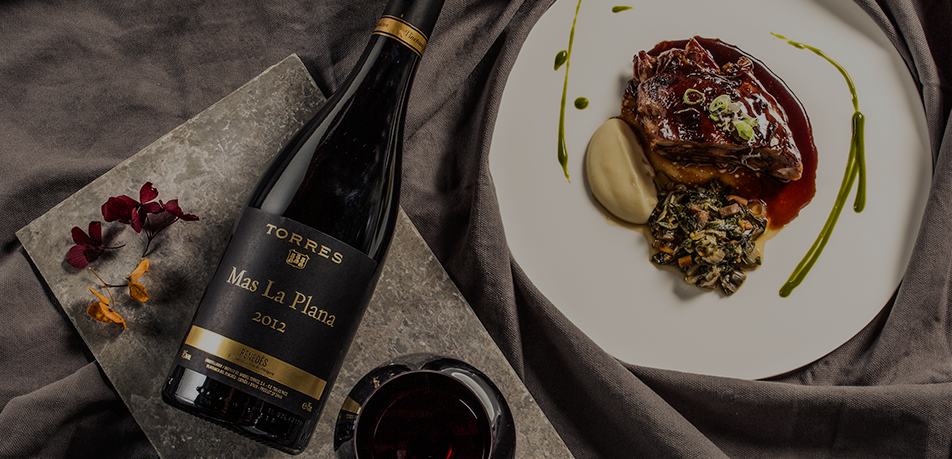Winter Food and Wine.

When the season changes, it is time to restock our pantry and revamp our recipes. Soups adapt to the season, stews embrace hearty meats, wild game claims its wintry menu spot, and vegetables like eggplant and zucchini star in flavorful side dishes. Hello cold weather!
Seasonal cooking: what are our options?
In a globalized world where any food item can be consumed, anywhere, at any time of year, I am a staunch champion of seasonal products. So before getting into wine and food pairings, let's check in with our winter foods.
- Vegetables: chard, garlic, artichokes, celery, eggplant, broccoli, zucchini, cardoon, red cabbage, cauliflower, endive, curly endive, spinach, peas, broad beans (starting in January), green beans, lettuce, turnips, bell pepper, leeks, radishes, beets, cabbage, carrots, and tomatoes, according to Spain's Ministry of Food and Agriculture.
-
Pescados: Bacalao, mero, congrio (hasta finales de diciembre), besugo, salmonete, palometa, caballa (desde febrero), angulas, dorada (hasta finales de diciembre), lubina, salmón y trucha. Algunos disponibles solo en piscifactorías. La lamprea está disponible todo el año.
-
Shellfish: red shrimp (until late December), goose barnacles (only in December, March, June and September), prawns, langoustines, cockles, scallops, oysters, clams and mussels.
-
Meat: woodcock, capon, quail, lamb, hen, boar, hare, duck, turkey and venison. Pork, rabbit, beef and chicken are available year round.
-
Fruit: persimmon, cherimoya, kiwi, lemon, tangerine, orange, apple, banana, grapefruit and grapes.
In our country, winter is the season to enjoy these foods at their peak consumption moment. This is further proven by popular wisdom and tradition, which have made them key players in side dishes, soups, creamy soups, casseroles, meat and vegetable stews, and legumes cooked with spices. These are our allies in combating the cold.
Now that we know what we're dealing with, let's look at the wine.
Finding a match: the never-ending story
Not even the world's best sommelier is capable of finding a perfect match. Selecting the right wine for a dish is very subjective (informed by experience, education, culture, training, even place of birth) and, unless we're François Chartier and can argue the point from a scientific perspective, will always be up for debate. Philippe Bourguignon, considered one of the world’s great wine experts, discusses the idea of subjectivity in his well-known book L'Accord Parfait (2001).
Furthermore, as recipes get more complex or the number of ingredients increases, the harder it is to find a suitable companion. The cooking method alone is crucial when it comes to picking the right wine. To this end, I'd like to mention an example that sommelier Ferran Centelles gives in his book ¿Qué vino con este pato? The author looks at two recipes with the same main ingredient: chicken. In the first recipe, the chicken is sautéed with fine herbs, whereas in the second it is charcoal-grilled with poached onions and dried fruit. He serves the sautéed chicken with a lees-aged Xarel·lo from Penedès and pairs the roast chicken with a Ribera del Duero Reserva. Even though the main ingredient is the same, the wines are different.
“The predominant flavor depends on the cooking method and the ingredients used in preparing the dish. They directly influence the choice of wine to pair with the food.”
F. Centelles.
Leading professionals in food and wine pairing would agree with this statement, as well as with this: sauces and sides are what determine the match.
Time to dive in headfirst
That being said, if we're looking for food and wine pairing ideas in our cold-weather pantry and cookbook, here are some suggestions:
Red meat like lamb or beef, even when cooked with spices, is interesting in combination with aromatic, mouthfilling reds that are spicy or herbal on the nose. When grilling or roasting the meat, go for big, oak-aged reds with floral notes, smoke or spices. However, when stewing those same meats, a very aromatic, velvety wine is a better bet. When it comes to carpaccio or cooked meat, where the flavors are less intense, smooth reds or whites with medium acidity will do nicely. A Tempranillo is a great match for fatty dishes.
When pairing pork, and its characteristics dominate the dish, try a white with apricot or peach notes, a Merlot (like the Torres Family's Bellaterra) or Tempranillo, or a Fino in the case of Ibérico ham.
As for fish and shellfish, Sauvignon or even Verdejo whites are lovely with salmon, salmon trout, mussels, scallops and shrimp recipes.
According to Chartier, shared nuances in wine and food combine to yield a harmonious match. Mild, delicate fish with subtle aromas and flavors asks for a wine of similar characteristics. Opting for a white in a matching style is a good call. However, other types of fish, such as red mullet, can handle a red. What about oysters? Go with a Manzanilla or Fino, which both sport a similarly briny note. If the recipe is spicy, a white with crisp acidity or even a slightly sweet wine are excellent choices.
As for desserts, if the emphasis is on sweet, the wine should strike a balance. No more, no less.
Remember, this is all theoretical. In the end, the best pairing is whatever satisfies and pleases your particular palate. What matters most is whether you enjoy it.
